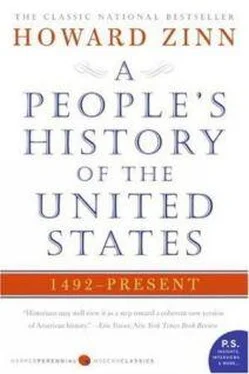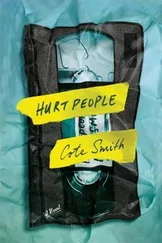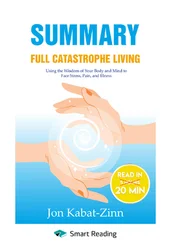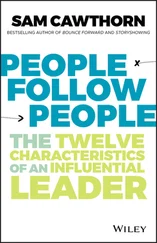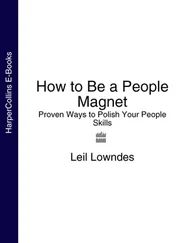Howard Zinn - A People
Здесь есть возможность читать онлайн «Howard Zinn - A People» весь текст электронной книги совершенно бесплатно (целиком полную версию без сокращений). В некоторых случаях можно слушать аудио, скачать через торрент в формате fb2 и присутствует краткое содержание. Издательство: Harper-Collins, Жанр: Фэнтези, на английском языке. Описание произведения, (предисловие) а так же отзывы посетителей доступны на портале библиотеки ЛибКат.
- Название:A People
- Автор:
- Издательство:Harper-Collins
- Жанр:
- Год:неизвестен
- ISBN:нет данных
- Рейтинг книги:4 / 5. Голосов: 1
-
Избранное:Добавить в избранное
- Отзывы:
-
Ваша оценка:
- 80
- 1
- 2
- 3
- 4
- 5
A People: краткое содержание, описание и аннотация
Предлагаем к чтению аннотацию, описание, краткое содержание или предисловие (зависит от того, что написал сам автор книги «A People»). Если вы не нашли необходимую информацию о книге — напишите в комментариях, мы постараемся отыскать её.
A People — читать онлайн бесплатно полную книгу (весь текст) целиком
Ниже представлен текст книги, разбитый по страницам. Система сохранения места последней прочитанной страницы, позволяет с удобством читать онлайн бесплатно книгу «A People», без необходимости каждый раз заново искать на чём Вы остановились. Поставьте закладку, и сможете в любой момент перейти на страницу, на которой закончили чтение.
Интервал:
Закладка:
On December 13, 1978, Nicholas Gage reported for the New York Times :
The staff of the United States Embassy here has been bolstered by dozens of specialists flown in to back an effort to help the Shah against a growing challenge to his rule according to embassy sources… The new arrivals, according to the embassy sources, include a number of Central Intelligence Agency specialists on Iran, in addition to diplomats and military personnel.
In early 1979, as the crisis in Iran was intensifying, the former chief analyst on Iran for the CIA told New York Times reporter Seymour Hersh that "he and his colleagues knew of the tortures of Iranian dissenters by Savaki, the Iranian secret police set up during the late 1950s by the Shah with help from the CIA." Furthermore, he told Hersh that a senior CIA official was involved in instructing officials in Savaki on torture techniques.
It was a popular, massive revolution, and the Shah fled. The Carter administration later accepted him into the country, presumably for medical treatment, and the anti-American feelings of the revolutionaries reached a high point. On November 4, 1979, the U.S. embassy in Teheran was taken over by student militants who, demanding that the Shah be returned to Iran for punishment, held fifty-two embassy employees hostage.
For the next fourteen months, with the hostages still held in the embassy compound, that issue took the forefront of foreign news in the United States and aroused powerful nationalist feelings, When Carter ordered the Immigration and Naturalization Service to start deportation proceedings against Iranian students who lacked valid visas, the New York Times gave cautious but clear approval. Politicians and the press played into a general hysteria. An Iranian-American girl who was slated to give a high school commencement address was removed from the program. The bumper sticker "Bomb Iran " appeared on autos all over the country.
It was a rare journalist bold enough to point out, as Alan Richman of the Boston Globe did when the fifty-two hostages were released alive and apparently well, that there was a certain lack of proportion in American reactions to this and other violations of human rights: "There were 52 of them, a number easy to comprehend. It wasn't like 15,000 innocent people permanently disappearing in Argentina… They [the American hostages] spoke our language. There were 3000 people summarily shot in Guatemala last year who did not."
The hostages were still in captivity when Jimmy Carter faced Ronald Reagan in the election of 1980. That fact, and the economic distress felt by many, were largely responsible for Carter's defeat.
Reagan's victory, followed eight years later by the election of George Bush, meant that another part of the Establishment, lacking even the faint liberalism of the Carter presidency, would be in charge. The policies would be more crass-cutting benefits to poor people, lowering taxes for the wealthy, increasing the military budget, filling the federal court system with conservative judges, actively working to destroy revolutionary movements in the Caribbean.
The dozen years of the Reagan-Bush presidency transformed the federal judiciary, never more than moderately liberal, into a predominantly conservative institution. By the fall of 1991, Reagan and Bush had filled more than half of the 837 federal judgeships, and appointed enough right-wing justices to transform the Supreme Court.
In the seventies, with liberal justices William Brennan and Thurgood Marshall in the lead, the Court had declared death penalties unconstitutional, had supported (in Roe v. Wade ) the right of women to choose abortions, and had interpreted the civil rights law as permitting special attention to blacks and women to make up for past discrimination (affirmative action).
William Rehnquist, first named to the Supreme Court by Richard Nixon, was made Chief Justice by Ronald Reagan. In the Reagan-Bush years, the Rehnquist Court made a series of decisions that weakened Roe v. Wade , brought back the death penalty, reduced the rights of detainees against police powers, prevented doctors in federally supported family planning clinics from giving women information on abortions, and said that poor people could be forced to pay for public education (education was not "a fundamental right").
Justices William Brennan and Thurgood Marshall were the last of the Court's liberals. Old and ill, though reluctant to give up the fight, they retired. The final act to create a conservative Supreme Court was President Bush's nomination to replace Marshall. He chose a black conservative, Clarence Thomas. Despite dramatic testimony from a former colleague, a young black law professor named Anita Hill, that Thomas had sexually harassed her, Thomas was approved by the Senate and now the Supreme Court moved even more decisively to the right.
With conservative federal judges, with pro-business appointments to the National Labor Relations Board, judicial decisions and board findings weakened a labor movement already troubled by a decline in manufacturing. Workers who went out on strike found themselves with no legal protection. One of the first acts of the Reagan administration was to dismiss from their jobs, en masse, striking air traffic controllers. It was a warning to future strikers, and a sign of the weakness of a labor movement which in the thirties and forties had been a powerful force.
Corporate America became the greatest beneficiary of the Reagan-Bush years. In the sixties and seventies an important environmental movement had grown in the nation, horrified at the poisoning of the air, the seas and rivers, and the deaths of thousands each year as a result of work conditions. After a mine explosion in West Virginia killed seventy-eight miners in November 1968 there had been angry protest in the mine district, and Congress passed the Coal Mine Health and Safety Act of 1969. Nixon's Secretary of Labor spoke of "a new national passion, passion for environmental improvement."
The following year, yielding to strong demands from the labor movement and consumer groups, but also seeing it as an opportunity to win the support of working-class voters, President Nixon had signed the Occupational Safety and Health Act of 1970. This was an important piece of legislation, establishing a universal right to a safe and healthy workplace, and creating an enforcement machinery. Reflecting on this years later, Herbert Stein, who had been the chairman of Nixon's Council of Economic Advisers, lamented that "the juggernaut of environmental regulation proved not to be controllable by the Nixon administration."
While President Jimmy Carter came into office praising the OSHA program, he was also eager to please the business community. The woman he appointed to head OSHA, Eula Bingham, fought for strong enforcement of the act, and was occasionally successful. But as the American economy showed signs of trouble, with oil prices, inflation, and unemployment rising, Carter seemed more and more concerned about the difficulties the act created for business. He became an advocate of removing regulations on corporations and giving them more leeway, even if this was hurtful to labor and to consumers. Environmental regulation became more and more a victim of "cost- benefit" analysis, in which regulations protecting the health and safety of the public became secondary to how costly this would be for business.
Under Reagan and Bush this concern for "the economy," which was a short-hand term for corporate profit, dominated any concern for workers or consumers. President Reagan proposed to replace tough enforcement of environmental laws by a «voluntary» approach, leaving it to businesses to decide for themselves what they would do. He appointed as head of OSHA a businessman who was hostile to OSHA's aims. One of his first acts was to order the destruction of 100,000 government booklets pointing out the dangers of cotton dust to textile workers.
Читать дальшеИнтервал:
Закладка:
Похожие книги на «A People»
Представляем Вашему вниманию похожие книги на «A People» списком для выбора. Мы отобрали схожую по названию и смыслу литературу в надежде предоставить читателям больше вариантов отыскать новые, интересные, ещё непрочитанные произведения.
Обсуждение, отзывы о книге «A People» и просто собственные мнения читателей. Оставьте ваши комментарии, напишите, что Вы думаете о произведении, его смысле или главных героях. Укажите что конкретно понравилось, а что нет, и почему Вы так считаете.
